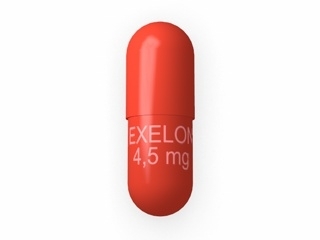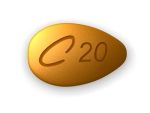Azithromycin 500 mg
Zithromax Active substance: azithromycin dihydrate in terms of azithromycin 250 mg or 500 mg.
Pharmacotherapeutic group: antibiotic-azalide
Azithromycin is an antibiotic semi-synthetic. Broad spectrum antibacterial agent. The drug has increased acid resistance – by 300 times compared to erythromycin and acts bacteriostatically. It slows down the growth and reproduction of bacteria, in high concentrations it has a bactericidal effect. Acts on extra and intracellular pathogens. Active against gram-positive microorganisms, gram-negative bacteria, and some anaerobic microorganisms. It is inactive against Gram-positive bacteria resistant to erythromycin.
Zithromax 500 mg price online
Azithromycin in Canadian online pharmacy can be ordered without a prescription – Zithromax without a prescription
Azithromycin is a broad-spectrum antibacterial drug from the group of azalide macrolides, which has a bacteriostatic effect. It inhibits peptide translocase, slows the growth and reproduction of bacteria, and in high concentrations has a bactericidal effect. Acts on extra and intracellular pathogens. Microorganisms can initially be resistant to the action of an antibiotic or acquire resistance to it.
Are sensitive to azithromycin:
Aerobic Gram-positive micro-organisms:
- Staphylococcus aureus (susceptible to methicillin),
- Streptococcus pneumonia (susceptible to penicillin),
- Pyogenic streptococcus;
Aerobic Gram-negative micro-organisms:
- Haemophilus Influenza,
- Haemophilus influenza parainfluenza,
- Legionella pneumophila,
- Catarrhal Moraxella,
- Pasteurella multicidus,
- Gonococcal Neisseria;
Anaerobic micro-organisms:
- Clostridium perfringens,
- Fusobacteria,
- Porphyromonas;
Other:
- Chlamydia trachomatis,
- Chlamydial Pneumonia,
- chlamydial parrot,
- Mycoplasma pneumonia,
- Mycoplasma hominis,
- Borrelia burgdorferi.
After oral administration, azithromycin is well absorbed and rapidly distributed in the body. The maximum concentration (Cmax) after oral administration of azithromycin 500 mg occurs after 2-3 hours. The concentration in tissues and cells is 10-50 times higher than in blood serum. Easily penetrates through histohematic barrier, and penetrates well into the respiratory tract, urinary organs and tissues, incl. in the prostate gland, skin and soft tissues. It is also transported to the site of infection by phagocytes, leukocytes, and macrophages, where it is released in the presence of bacteria. Penetrates through cell membranes and creates high concentrations there.
In foci of infection, the concentration is 25-40% higher than in healthy tissues and correlates with the severity of the inflammatory process. Remains at effective concentrations for 5-7 days after the last dose.
Food intake significantly modifies the pharmacokinetics: in elderly men (65-85 years), the pharmacokinetic parameters do not change, in women, the Cmax increases by 30 to 50%.
Indications for use of Zithromax
- Infections of the upper respiratory tract and ENT organs caused by susceptible pathogens: pharyngitis, tonsillitis, laryngitis, sinusitis, otitis media;
- Scarlet fever;
- Infections of the lower respiratory tract: pneumonia (including chronic, atypical exacerbation), bronchitis;
- Skin and soft tissue infections: erysipelas, impetigo, secondarily infected dermatoses;
- Urinary tract infections caused by Chlamydia trachomatis: gonorrhea and non-chronic urethritis, cervicitis;
- Lyme disease (initial stage), gastric ulcer, and 12 duodenal ulcers.
Contraindications to the use of Zithromax
- Hypersensitivity to azithromycin, erythromycin, other macrolides or ketolides;
- hypersensitivity to the excipients of the drug used;
- severe liver dysfunction;
- severe renal failure;
- simultaneous use with ergotamine and dihydroergotamine;
- children under 18.
With care:
- myasthenia gravis; mild to moderate hepatic impairment; mild to moderate renal impairment;
- patients with arrhythmogenic factors (especially in the elderly) – congenital or acquired prolongation of the QT interval;
- patients receiving cisapride, terfenadine, antipsychotics (pimozide), antidepressants (citalopram), fluoroquinolones (moxifloxacin and levofloxacin);
- patients with impaired fluid/electrolyte balance, especially those with hypokalemia or hypomagnesemia, clinically significant bradycardia, arrhythmia, or severe heart failure;
- simultaneous use with digoxin, warfarin, and cyclosporin.
Pregnancy and breastfeeding
Azithromycin crosses the placental barrier. Use during pregnancy is possible only in cases where the expected benefits to the mother outweigh the potential risks to the fetus. If necessary, the use of azithromycin during lactation should decide on the termination of breastfeeding.
Azithromycin side effects
Against the background of taking azithromycin tablets with a different frequency, the development of negative reactions from various organs and systems is possible:
The digestive system – nausea, periodic vomiting, abdominal pain, accompanied by bloating (flatulence). More rarely, constipation develops, ulcers of the oral mucosa form, and the functional activity of the salivary glands are increased.
Cardiovascular system – the feeling of palpitations, periodic sensations of heat in the face (“hot flushes”), less likely to cause a decrease in the level of systemic blood pressure.
The nervous system – dizziness, periodic headaches, less often the appearance of feelings of fear, insomnia, or drowsiness. In isolated cases, convulsions and severe changes in the psyche were recorded (delirium, hallucinations).
Liver and bile ducts are an inflammatory process in the tissues of the liver (hepatitis), an increase in the activity of AST and ALT enzymes in the blood, which indicates damage to hepatocytes (liver cells).
Respiratory system – dyspnea and periodic nosebleeds rarely develop.
Blood and bone marrow – anemia (anemia): decrease in the number of lymphocytes per unit volume of blood.
Sensory organs – there is rarely a visual or hearing impairment.
Skin and subcutaneous tissues – dry skin, its inflammation (dermatitis) is less often marked by excessive sweating (hyperhidrosis).
Genitourinary system – discomfort (pain, burning sensation) during urination, called dysuria.
The musculoskeletal system – joint pain (arthralgia), inflammation (arthritis).
The appearance of any signs of the appearance of negative reactions is the basis for stopping the further administration of tablets of Azithromycin and making contact with a medical specialist.
Exceeding the recommended therapeutic dose of Azithromycin tablets leads to the appearance or strengthening of signs of the appearance of negative reactions from various organs and systems. The first symptoms are nausea, vomiting and hearing loss. Overdose treatment is carried out by a consultant. It includes washing the stomach, and intestines, the appointment of intestinal sorbents (activated carbon) and symptomatic therapy. There is no specific antidote to azithromycin tablets today.













